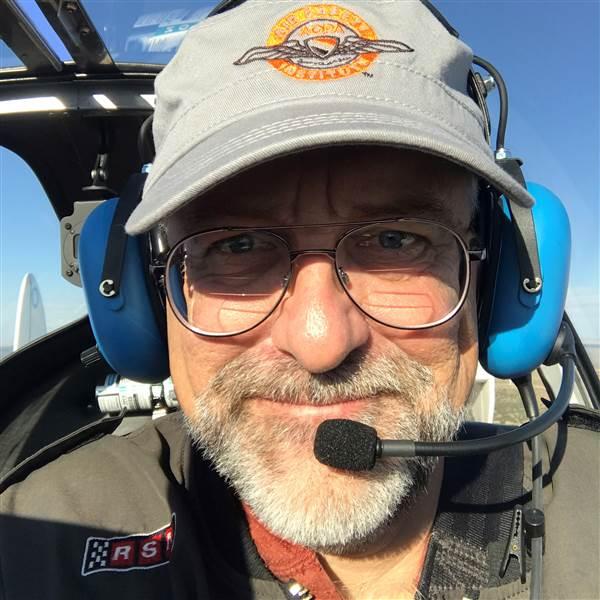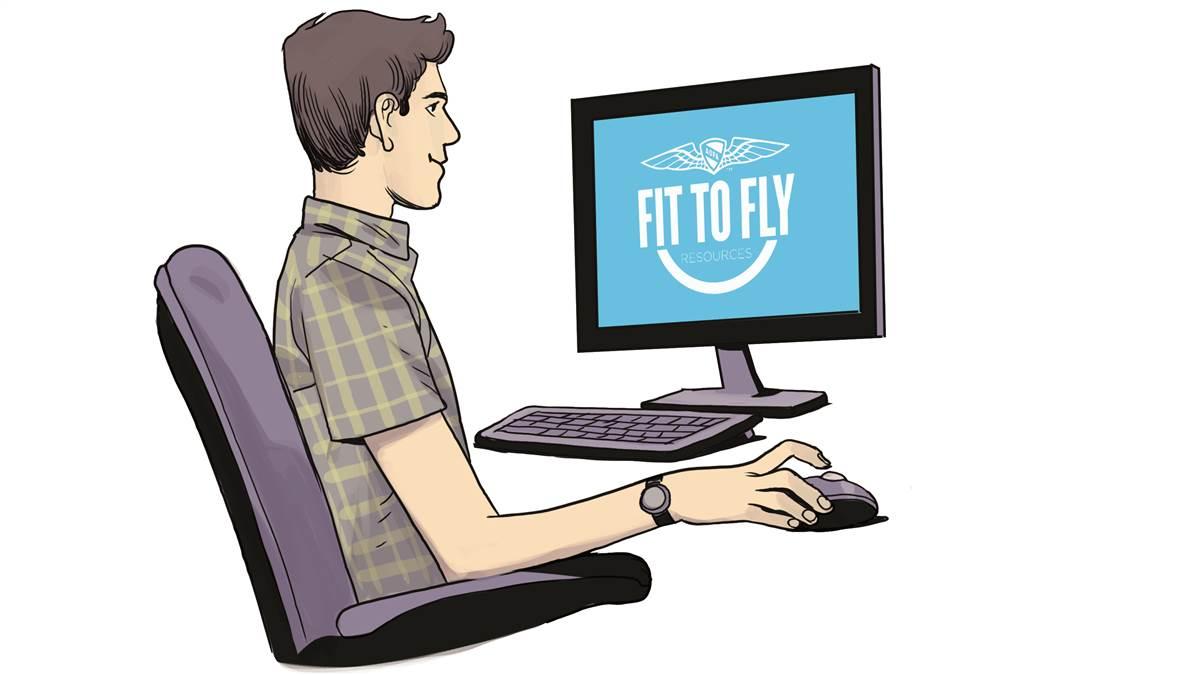Fit to fly
If you feel bad, ground yourself

In the end, our Ercoupe was grounded for maintenance longer than the rain fell on Noah—the annual ate up a full 16 percent of the flying year. You can imagine how excited I was when I finally got the call that the airplane would be ready for a test flight in two days.
That night I got a runny nose.
The next night, a sore throat.
Doggedly determined, and lusting to fly again, I got up the day of the test flight and planned to power through it. It was just a cold, I told myself. Not even a cold, really—more of an impending cold. Heck, I might not even fully come down with it at all; sometimes you can dodge the bullet. And after all, I hadn’t taken any cold medicine for the runny nose and sore throat, so I was totally legal to fly. Right?
It’s a good question, and in this era of many different approaches to pilot medical certificates, just what are the rules that dominate fitness to fly, anyway? Are they different for each flavor of medical?
All roads lead to Rome
There have never been so many medical options open to pilots as there are today. Still intact, of course, are the traditional first, second, and third class medical certificates issued by an aviation medical examiner (AME) following a flight physical. But we also have the decade-old sport pilot regulations that allow pilots to fly aircraft that meet the FAA definition of a Light Sport aircraft with a valid U.S. driver’s license—so long as the pilot was found eligible for a medical at the time of his or her most recent application, and the pilot’s most recent medical certificate was not suspended or revoked (pilots with expired medicals still qualify, and student pilots may earn a sport pilot certificate without ever applying for a traditional medical certificate). We now have BasicMed, an alternative to the third class medical certificate that allows qualified pilots to act as pilot in command and exercise most of the privileges of a student, recreational, or private pilot certificate. And, of course, sailplane and balloon pilots have no paper medical requirement whatsoever.
But here’s the important part: No matter what form of medical—or sans-medical—a pilot flies under, all pilots are required to self-assess their medical readiness before every flight.
Self-assessing and self-grounding
Although our medical approvals now come from the four points of the compass, the regulations on being fit to fly largely gather in one place for general aviation pilots: FAR 61.53, Prohibition on operations during medical deficiency. It starts by clearly laying out that pilots who hold a medical certificate cannot serve as pilot in command, or a required pilot crewmember, while they know or have “reason to know” of any medical condition that would make them “unable to meet the requirements for the medical certificate necessary for the operation” or are taking medication or receiving “other treatment” that would result in them being unable to meet those requirements.
Huh?
As with many regulations, there’s some ambiguity in the language, but FAR 61.53 has been informally interpreted by pilots to mean: If you feel bad, ground yourself. In aviation circles, this review of one’s own flight fitness prior to engine start is often known as “self-certification,” although neither the specific language of “self-certification” nor “self-grounding” appears in the FARs.
So, if you have a medical and don’t feel well enough to fly, are you required to report it to the FAA? No. If you are down with the flu, ground yourself until you are well, then start flying again. However, visits to health professionals, like seeing your doctor for the flu, need to at least be reported on your next medical application. The MedXPress application also will ask for certain medical history, but the self-grounding itself would not need to be reported. If you’re not sure how a health condition may affect your medical certification, check AOPA’s medical resources online (www.aopa.org/medical) or contact AOPA’s medical certification specialists at 800-USA-AOPA (872-2672).
OK, so much for pilots flying with a traditional medical. What about sport pilots? And what about pilots flying under BasicMed?
These groups are also addressed in FAR 61.53 (b), operations that do not require a medical certificate, and the language is similar: No PIC or required pilot flight crewmember duties “while that person knows or has reason to know of any medical condition that would make the person unable to operate the aircraft in a safe manner.” And just to be sure we got the message: (c) operations requiring a medical certificate or a U.S. driver’s license, tells us to look at section (b) above.
Not fit?
So how do we decide that we are “unable to meet the requirements for the medical certificate” or that we are “unable to operate the aircraft in a safe manner”? Does my impending cold make me unfit? How do we define our fitness?
For years in flight training, the mnemonic IMSAFE has been used as a quick checklist to remind us of some of the elements that affect safe flight. The letters stand for illness, medication, stress, alcohol, fatigue, and emotion; in some versions the E stands for eating, reminding us of the need for proper nutrition before a long flight.
I like the fact that the mnemonic encompasses a larger arena of fitness than a purely medical view, taking in both body and mind, but I do find it a bit simplistic. Obviously, gone are the days of taking a nip of whiskey before leaping nimbly into your Curtiss Jenny; the effect of fatigue is so well recognized that professional pilots now fly through a tangle of complex rules on rest and duty hours; we all know (or should know) that both prescription and over-the-counter medications can affect our judgment and skill; and most of us know that if we’re overcome with glee because we just won the lottery we should be shopping for an airplane—not flying one. The effect of illness is clear-cut when you are sick as a dog, but more complex when you’re on the rebound or when you’re just getting sick, like I was.
So where does that leave us? The FARs have granted us quite a bit of rope to define this for ourselves, and the FAA expects us to be smart and prudent, rather than to hang ourselves with that rope.
What do other resources tell us?
There aren’t any current advisory circulars on the subject of self-assessment for GA pilots, although AC 60-22, “Aeronautical Decision Making,” and AC 68-1A, “BasicMed,” both briefly touch on it. There are also several advisory circulars for air carrier operations: AC 117-3, AC 120-103A, and AC-120-100, all of which deal with pilot fatigue. The Aeronautical Decision Making and Aeromedical Factors chapters of the Pilot’s Handbook of Aeronautical Knowledge feature a flight risk assessment tool that includes at least some pilot factors. And AOPA’s aeromedical course, designed for BasicMed but relevant to all pilots, offers further insight into self-assessment.
But the clearest FAA guidance comes from the Aeronautical Information Manual (AIM), which champions IMSAFE in Chapter 8: “Medical Facts for Pilots.” The AIM calls the mnemonic a “personal checklist” and urges pilots to use IMSAFE as part of preflight. In its discussion of illness, the AIM states, “Even a minor illness suffered in day-to-day living can seriously degrade performance of many piloting tasks vital to safe flight.” It details the various ways illnesses and medications can impair judgment, and ends with: “The safest rule is not to fly while suffering from any illness. If this rule is considered too stringent for a particular illness, the pilot should contact an aviation medical examiner for advice.”
That’s about as clear as it gets. The AIM doesn’t discuss pre-illness or recovery. The problem is that there are too many shades of gray to spell out every circumstance possible, so it simply comes down to us as pilots to use a combination of common sense and mature self-analysis. Part of that self-analysis has to include an honest look at your own influences and desires—making sure they don’t trump your common sense.
To fly or not to fly?
During the one-hour drive to the airport where my mechanic is based, the better angels of my nature began to gain a foothold. I knew, deep down in my heart, that I wasn’t at my best, and for a test flight after months of major maintenance, I needed to be at my best. But still, part of me resisted.
I knew I was getting sick, but I wasn’t really sick, yet. Plus, in a few days I probably would be sick. It might be a week or two until I was well. An internal debate raged from ear to ear inside my head as the miles rolled by.
Myriad flight safety publications and training events teach us to deal with the expectations of passengers, work pressures, and get-there-itis. All of these pressures have an external component: not wanting to disappoint others, fear of work repercussions, letting a set schedule dominate thinking. But I find the internal demons that whisper in our ears from inside our skulls are the hardest to banish.
When I got to the airport, I still hadn’t made up my mind.
I blew my nose one last time and walked into my mechanic’s hangar. And there she was: That beautiful little twin-tailed beast. Sparkling hot-rod blue and white, paint glowing under the hangar lights. She was front and center, her nose pointed at the giant double doors, beckoning me to fly.
My A&P greeted me with a big smile and said, “She’s ready to fly!”
I sighed, took one last longing look at the airplane and said, “But, unfortunately, her pilot is not.”
William E. Dubois is an aviation writer, world speed record holder, and two-time National Champion air racer. He teaches Rusty Pilot seminars for AOPA and blogs his personal flying adventures at www.PlaneTales.net.

 As an alternative to a third class medical certificate following a flight physical from an aviation medical examiner (AME), pilots who held a valid FAA medical certificate of any class, regular or special issuance, on or after July 15, 2006, which was not suspended or revoked, did not have their most recent authorization for special issuance withdrawn or most recent application denied, and hold a U.S. driver’s license can opt for BasicMed.
As an alternative to a third class medical certificate following a flight physical from an aviation medical examiner (AME), pilots who held a valid FAA medical certificate of any class, regular or special issuance, on or after July 15, 2006, which was not suspended or revoked, did not have their most recent authorization for special issuance withdrawn or most recent application denied, and hold a U.S. driver’s license can opt for BasicMed.  Personally, I would expand the idea of the sterile cockpit to “no food, no drink.” But not everyone can or should suppress the urge for a snack or the need to keep hydrated, especially on a long trip. So what do you do to avoid Dorito-stained upholstery, smears on your touchscreens, and gunk on your knobs? Not to mention the effect many portable snack foods have on your overall health. Too much sugar will make you feel sluggish and too much salt may contribute to high blood pressure.
Personally, I would expand the idea of the sterile cockpit to “no food, no drink.” But not everyone can or should suppress the urge for a snack or the need to keep hydrated, especially on a long trip. So what do you do to avoid Dorito-stained upholstery, smears on your touchscreens, and gunk on your knobs? Not to mention the effect many portable snack foods have on your overall health. Too much sugar will make you feel sluggish and too much salt may contribute to high blood pressure.

